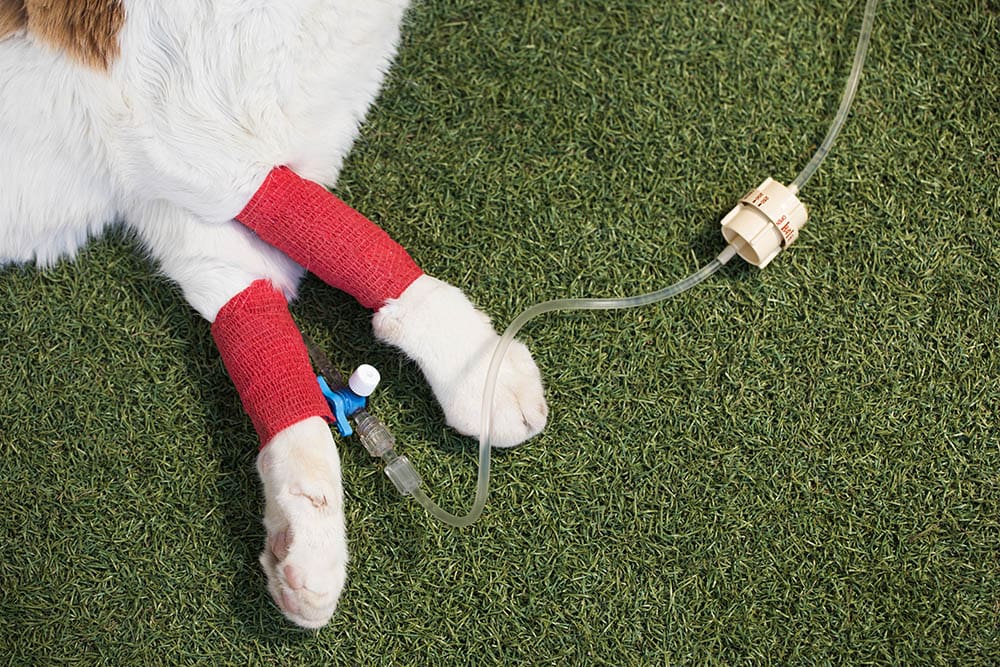Do Tortoises Hibernate? Our Vet Explains (With Tips)
By Dr. Luqman Javed, DVM (Vet)
Updated on
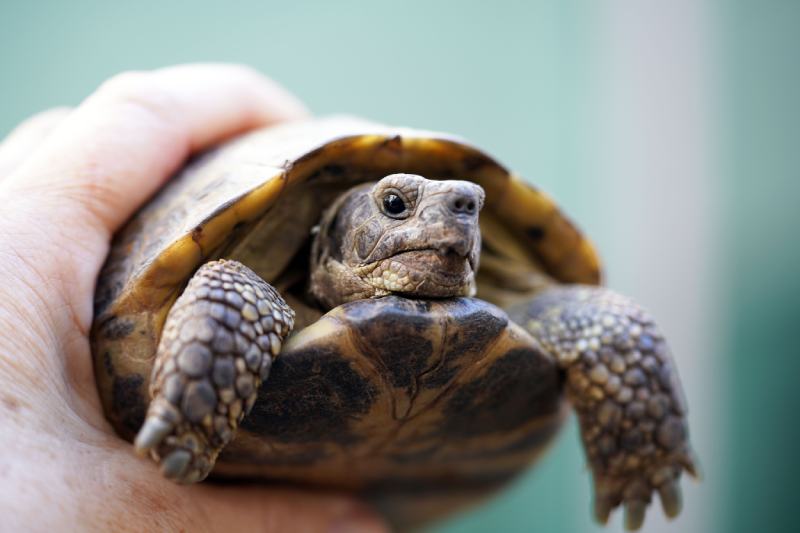
Click to Skip Ahead
While you may not have the liberty to be a couch potato throughout the winter, your pet tortoise doesn’t have to go to work or attend 8 AM classes daily. As the temperatures drop, many animals go into a temporary slumber called hibernation. Some species of tortoises do undergo a hibernation-like state (also known as brumation).
If you have a pet tortoise at home, you should first identify their species and consider several
What Is Hibernation?
Hibernation is a winter dormancy period during which some warm blooded animals lower their metabolic rates. When winter arrives, food may be scarce, and the lower temperatures do not allow many animals to leave their habitat and fend for themselves out in the snow and extreme weather. Therefore, some warm blooded animals choose to hibernate. For certain species, this is a sex-specific task; for example, only female polar bears hibernate over the winter. It’s also during this time that they give birth to their young (if they are pregnant before hibernation starts).
In cold-blooded animals such as tortoises, a period of hibernation is called brumation. One difference is, tortoises can wake up to bask or get some water or food when the weather gets a little warmer even if in the middle of winter.
Hibernation can last for weeks or months, depending on the species and its environment. Many animals survive this extremely cold period by lowering their metabolic rate to reduce energy needs. By doing this, they can survive on their energy reserves until favorable conditions return.
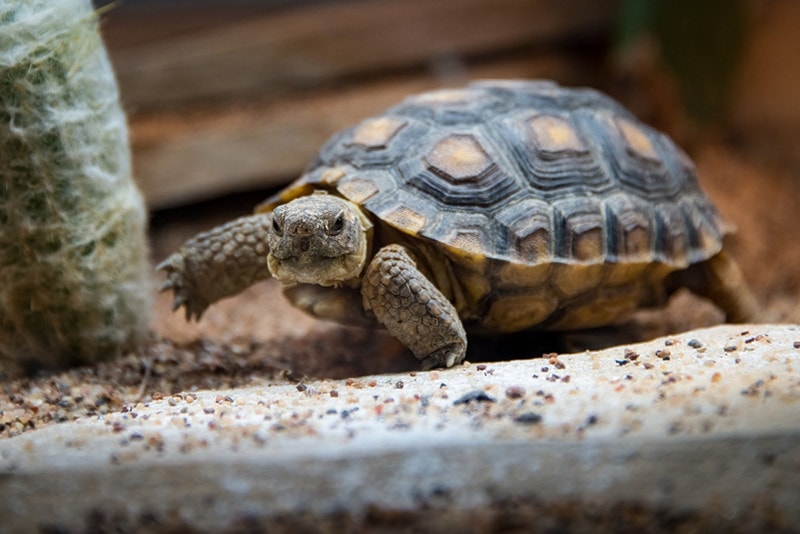
Is Brumating Necessary For a Tortoise?
For species of tortoises that do brumate in nature, brumation is beneficial, and also considered a necessity. There are several reasons for this:
- Helps maintain normal thyroid function
- May play a role in ensuring your tortoise reaches their maximum life expectancy
- Stimulates reproductive activity in males
- Synchronizes female ovulation
How Long Do Tortoises Brumate?
Wild tortoises or tortoises housed outdoors may brumate for up to 6 months, however, they require periodic checks from their caretakers (you!) while they do so. For tortoises that are brought indoors for brumation, the length of their slumber usually lasts around 8-12 weeks on average.
Which Tortoise Species Brumate?
Whether a tortoise brumates or not will depend on their species. Tortoises of the following species brumate in the wild:
- Desert tortoise
- Russian tortoise
- Hermann’s tortoise
- Greek tortoise
- Marginated tortoise
Please note that even if you have a tortoise that is of one of these listed species, it is impossible to tell whether or not they need to hibernate without knowing the exact locality of where the tortoise’s parents were from. Broadly speaking, tortoises that have an ancestry from temperate climates might be suitable candidates for brumation, however, you should always confirm this with the breeder or center where you adopted the tortoise.
Meanwhile, the following species do not brumate:
- African spurred tortoise
- Egyptian tortoise
- Leopard tortoise
- Golden Green tortoise
- Hinge-back tortoise
- Red-footed tortoise
- Radiated tortoise
- Yellow-footed tortoise
In addition, tortoises in tropical climates do not brumate, as they don’t have winter stimulation from the seasonal changes.
Can All Tortoises Brumate?
Even if your pet tortoise belongs to a brumating species, brumating could be unsafe for them.
Only robust, healthy adult tortoises that are housed in temperate climates and are from a brumating lineage should be considered candidates for brumation. Other requirements for brumation include the following:
- Have no recent or current medical illness
- Undergo a complete veterinary examination at least 2-3 months prior to brumation
- Undergo a complete prehibernation fecal analysis
- Be at an appropriate body weight
- Have their weight regularly monitored throughout the summer months
Please note that all of the criteria listed above should be met. You should also discuss additional criteria with your veterinarian to ensure that your tortoise is fit for brumation. A viable candidate for brumation should be weighed every 2-3 weeks during the summer to ensure that they are gaining weight throughout the warmer months of the year.
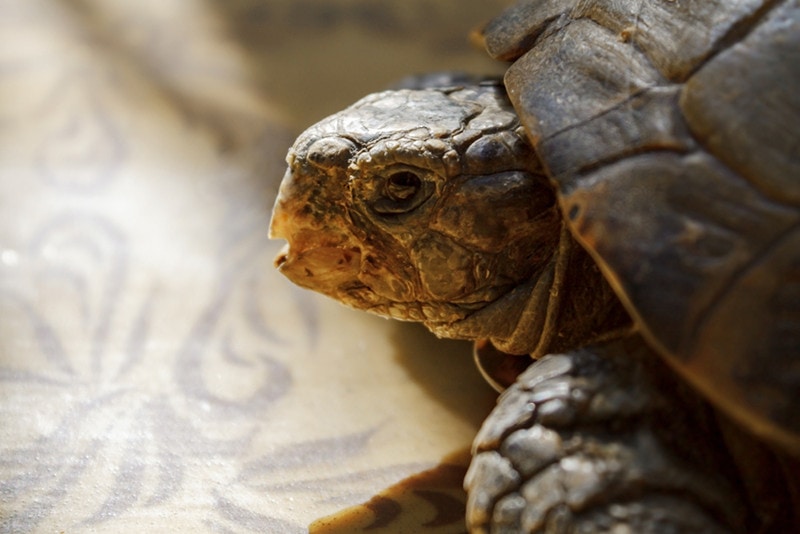
The 4 Steps for Tortoise Brumation
If your pet tortoise is the right species, is healthy, and is old enough to brumate, you can help it sleep off the winter.
1. Preparation
Planning to hibernate your tortoise this winter? You better start feeding them a good diet during summer. Figs are notable for being an excellent source of highly concentrated carbohydrates, and are often fed to tortoises that are candidates for brumation.
Depending on where you reside, the autumn months of your geographical location should undergo a thorough medical examination by a veterinarian (this includes a fecal examination). Do not brumate your pet unless your veterinarian gives you the green light to do so.
2. Fasting & Soaking
One week before the brumation date, start fasting your tortoise. It surely sounds cruel, but it’s necessary. Due to the slow transit rate of food through their digestive system, this fasting period is necessary to ensure that their gut is empty before they undergo brumation. Retained food within the food can lead to infections during the brumation process.
Though your tortoise will be fasting, they should not be deprived of water throughout this period.
In addition, during this week, you should soak your tortoise in a water bath every other day, for a period of about 20-30 minutes. The water bath should be shallow, containing about ¾ of an inch of water only – remember that tortoises aren’t great swimmers. The water should be tepid. These water baths are intended to help your tortoise empty their bowels before brumation.
Two weeks before the brumation date, start fasting your tortoise. It surely sounds cruel, but it’s best for them.
Your tortoise must brumate on empty bowels but with a full bladder. You can accomplish this by bathing your tortoise every day for 2 weeks. Do not feed your pet anything during this period. It will absorb the bathing water to hydrate itself. Doing so will help your pet defecate.
In these 2 weeks, you should also lower the vivarium’s temperature. It will help the tortoise to lower its body temperature naturally.

3. Brumation
If your tortoise is outdoors, you’ll know they’re ready for brumation because they will bask less, appear sluggish, and drink less as the temperature drops.
However, these cues might be missed if your tortoise is an indoors pet and in these situations, you’ll have to gradually lower the temperature in their vivarium to between 60 °F (around 16 °C) to 68 °F (20 °C).
There are two generally accepted ways to brumate your tortoise. For large outdoor tortoises, a shed can be offered in their enclosure and as long as the temperature where you reside stays between 50 – 60 °F (10 – 16 °C) throughout the winter, they can brumate outdoors.
However, since relying on the outdoor temperature is somewhat risky and potentially inconsistent, many owners opt to brumate their pet tortoises indoors.
To do so, here are the things you need:
- A container large enough to comfortably hold your tortoise. It should have a lid with holes.
- A fridge (with a thermostat)
- An external thermometer
- A notebook or any other system to record your tortoise’s weight
- A weighing scale
The fridge method is the most commonly recommended method for brumating a tortoise. However, do not keep your pet in the same fridge you use for food storage for hygiene reasons. Your tortoise should be weighed, placed in their box, and placed in this fridge.
An alternative to the fridge method is placing your tortoise in a dimly lit, draft-free, dry area indoors.
Your tortoise should be maintained between 50 – 60 °F (10 – 16 °C) in their controlled environment, with occasional temperature drops to 45 °F (7 °C). It is very important to note that your fridge should be in a room that is warmer than the thermostat setting in the fridge. If the ambient temperature falls below the setting on your fridge, your fridge will not “warm up” your tortoise.
If your tortoise’s temperature increases to over 60 °F (16 °C), they will not be able to brumate. Likewise, prolonged exposure to temperatures below 45 °F (7 °C) can be detrimental to your tortoise.
Your tortoise should be awakened every 2-4 weeks (depending on their size, larger tortoises can be awakened at longer intervals) and soaked in shallow water at around 75 °F (24 °C) for 2 hours to encourage hydration. During this time, you should examine your tortoise. Their eyes should reopen in about 2 hours. If they appear healthy, they should be weighed, allowed to dry, and then returned to brumation. If any signs of illness are present, you should not allow them to brumate and take them to your vet instead. Your tortoise should not lose more than 6-7% of their pre-brumation body weight throughout the entire process, if their weight drops beyond this threshold, seek veterinary care for your pet.
4. Waking Up
A complex series of biological processes will eventually rouse your tortoise from their slumber around spring (if they are outdoors). For indoor tortoises, the brumation can be stopped after 16 weeks at most. To end their brumation, indoor tortoises need to be placed under UVB to induce the presence of “sunlight”, this prompts their bodies to snap out of their slumber.
Your tortoise should be offered a soak in lukewarm water once they’re awake, and they should eat shortly after they are roused, in about 1-2 days. Failure to return to eating in this time frame should be considered a medical emergency and warrants immediate veterinary care, as they will rapidly deteriorate if they don’t begin eating shortly after their brumation ends.
Your pet should completely return to their normal eating habits within a week or two after their brumation ends.
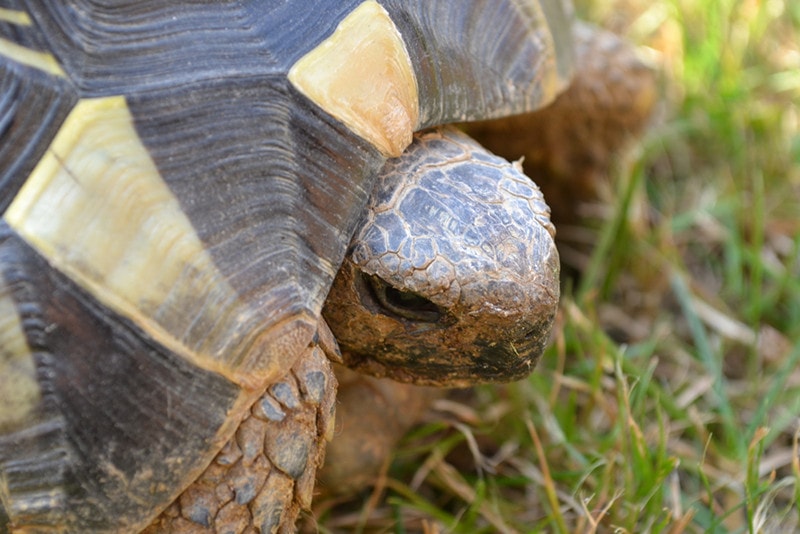
How to Know if a Tortoise Is Brumating or Dead
As a pet owner, losing a pet has to be one of your biggest fears. It becomes even more pronounced when your pet doesn’t move for weeks. But there’s a way to check if your tortoise is dead or simply brumating.
Hold the tortoise in your hand and check for muscle control. If they have tucked their limbs and head into the shell, your little friend has total muscle control. So, they’re just brumating and not dead. But if their legs and head are droopy and keep wobbling, get it to the vet immediately. Loss of muscle control often indicates death. Furthermore, if 2 hours in a warm bath doesn’t rouse them from their slumber, seek prompt veterinary care.
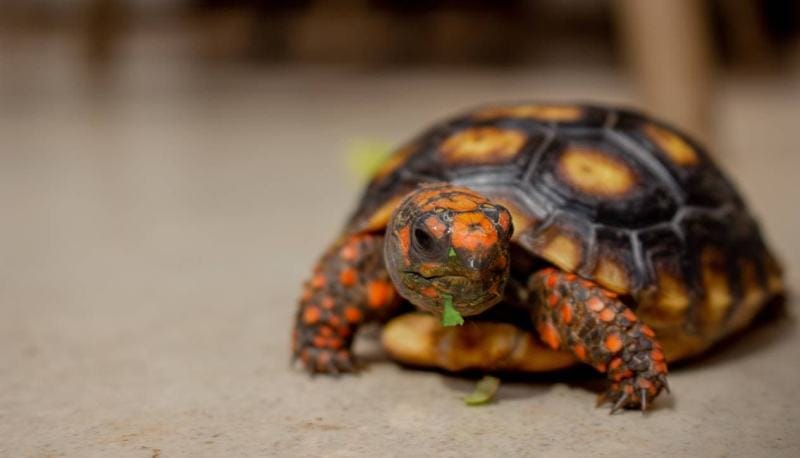
 Conclusion
Conclusion
Being the owner, you’re responsible for brumating your tortoise. But before you do that, you should ask yourself some questions. Remember that not all tortoises are candidates for brumation.
Is your tortoise a brumating species? Are they deemed healthy enough by your vet to brumate? If so, it’s something you should definitely prepare for.
Keep watch over them during winter and wake them up from sleep as warmer weather arrives (if you’re brumating them indoors). They will begin eating and drinking in no time once they regain their metabolic vigor and body heat.
See also:
- How Big Does a Sulcata Tortoise Get? Average Weight & Growth Chart
- How Long Do Hermann’s Tortoises Live: Average Lifespan, Data & Care
Featured Image Credit: Karen Dole, Shutterstock


